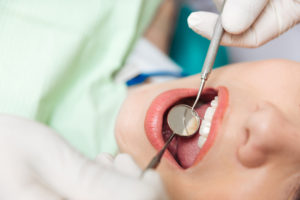Bone loss is one of the natural effects of aging. It can also occur as the result of injury. Dental bone grafting is an oral procedure that increases the amount of bone in your jaw where it has been lost, or to provide additional support to other parts of your mouth. The bone used in the graft might be taken from somewhere else in your body. Synthetic bone is sometimes used.
If you have lost teeth to either an accident or to tooth decay, and are going to receive implants to replace them, you may need a dental bone graft to build your jaw up enough to accept the implants. Even if you did not lose a tooth to tooth disease, the infection can still destroy part of your jaw bone material, leaving it vulnerable to breaking and affecting nearby teeth. Bone grafting can repair the problem. Sometimes, age related bone loss in the jaw can lead to the face becoming wrinkled, droopy, and looking shorter than it used to. This can be a serious aesthetic issue for a lot of people. Bone grafts can help reverse these appearance issues.
If your bone graft doesn’t involve taking bone from elsewhere in your body, the procedure is a relatively minor one. Your pain will possibly be manageable with over the counter pain relievers, and go away within a few days. However, if your graft does require taking bone from elsewhere in your body, you may experience pain or discomfort for weeks after the procedure, and prescription pain medication may be necessary. The healing process will also be a lot longer in this case.
You will sometimes be fully sedated for a dental bone graft, though sometimes lesser levels of sedation or even just local anesthetics are used. It depends on the location of the needed bone repair and the amount of material that needs to be grafted. The oral surgeon will make an incision in your gum to pull it away from the bone. They will then place the new bone material in the area that needs the graft. The new material may be held in place by a medical adhesive that will naturally dissolve over time. A membrane held in place with a screw is sometimes required, though. The incision is then sewn up.
After the procedure, you may have gauze placed around the incision to soak up blood leaking from the incision. Your surgeon will give you instructions for postoperative care, and possibly a prescription for pain relievers. You may also receive a prescription for antibiotics, to prevent infection. You may feel more comfortable sleeping with your head slightly raised for the first night of your recovery. You will probably feel pain in your jaw for about a week after the surgery. After that, the feeling will fade to one of discomfort that slowly disappears. However, if the feeling of pain increases during your recovery, you should contact your doctor. You should also contact your doctor if you notice redness or swelling in your gums, or if the area around the graft feels numb. You should feel back to normal in just a few weeks. It may take months before your jaw is strong enough to have implants put in, though. You will most likely need a series of follow up visits with your dentist, possibly involving x-rays, to check on the healing process.
















